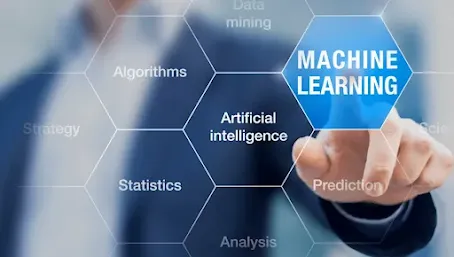AI and Machine Learning: Shaping the Future in 2025
Introduction
The digital revolution has reached an exciting juncture where Artificial Intelligence (AI) and Machine Learning (ML) are emerging as transformative forces. These technologies are not just shaping industries; they are redefining the paradigms of innovation, productivity, and decision-making. In 2025, AI and ML will be at the forefront of technological evolution, driving advancements across sectors like healthcare, education, finance, transportation, and beyond. This article delves into their transformative potential, exploring objectives, importance, challenges, and actionable insights to prepare for an AI-driven future.
Objectives
Enhancing Decision-Making: By analyzing vast datasets, AI and ML empower organizations to make informed, data-driven decisions.
Fostering Automation: Automating repetitive tasks reduces human intervention, allowing businesses to focus on core activities.
Driving Personalization: AI tailors experiences for users, enhancing customer satisfaction and loyalty.
Catalyzing Innovation: Machine learning models are enabling breakthroughs in product development and service delivery.
Improving Predictive Capabilities: From weather forecasting to market trends, AI enhances our ability to anticipate future events.
Importance of AI and ML
The significance of AI and ML in shaping the future cannot be overstated. These technologies are integral to building smarter systems that can:
Optimize Resources: Streamlining operations and reducing waste across industries.
Enhance Customer Experience: Real-time insights enable personalized interactions.
Accelerate Innovation: Automating R&D processes and uncovering new solutions to old problems.
Expand Market Opportunities: Creating new revenue streams through intelligent products and services.
Strengthen Competitive Advantage: Organizations leveraging AI are better positioned to outperform competitors.
Purpose
This article aims to provide an in-depth understanding of how AI and ML will influence various facets of life and business in 2025. It serves as a guide for professionals, organizations, and enthusiasts seeking to harness the power of these technologies for sustained growth and innovation.
Profitable Earning Potential
AI and ML offer a wealth of opportunities for businesses and individuals:
E-Commerce: Automated pricing, chatbots, and personalized recommendations boost sales.
Healthcare: AI-powered diagnostics, telemedicine, and drug discovery drive efficiency and outcomes.
Finance: Fraud detection, robo-advisors, and risk management optimize financial processes.
Real Estate: Predictive analytics and smart property management streamline investments.
Marketing: AI tools enable hyper-targeted advertising and campaign optimization.
The global AI market is projected to surpass $1 trillion by 2030, with ML accounting for a significant portion of this growth.
Pros
Efficiency: Automates processes, saving time and resources.
Scalability: Easily scales to accommodate growing datasets and users.
Accuracy: Reduces human errors, improving reliability in decision-making.
Innovation Enabler: Facilitates groundbreaking advancements in various domains.
24/7 Functionality: AI systems operate round-the-clock without fatigue.
Cons
High Initial Costs: Implementing AI solutions can be expensive.
Data Dependency: The quality of AI outcomes hinges on the availability of high-quality data.
Ethical Concerns: Bias in algorithms and decisions poses societal challenges.
Skill Shortages: A limited pool of skilled AI professionals creates barriers to adoption.
Security Risks: AI systems are susceptible to cyberattacks and data breaches.
Suggestions and Professional Advice
Invest in AI Education: Equip your workforce with AI/ML skills to bridge the talent gap.
Focus on Ethics: Develop ethical frameworks to ensure responsible AI usage.
Start Small: Pilot projects can validate AI initiatives before scaling.
Prioritize Data Security: Implement robust measures to protect sensitive data.
Collaborate Strategically: Partner with AI experts and vendors to enhance capabilities.
Monitor Trends: Stay updated with the latest AI advancements to remain competitive.
Conclusion
AI and ML are reshaping the world at an unprecedented pace. Their impact spans industries, transforming how we work, live, and interact. While challenges persist, they are far outweighed by the opportunities for growth, innovation, and efficiency. By adopting strategic approaches, businesses and individuals can unlock the immense potential of AI and ML, ensuring they are well-prepared for the future.
Summary
The integration of AI and ML into the fabric of society is set to revolutionize the future. In 2025, these technologies will redefine industries, driving growth and innovation. While challenges like cost, ethics, and security must be addressed, the benefits—including improved decision-making, scalability, and profitability—are undeniable. Organizations that proactively embrace AI and ML will not only thrive but also lead the charge into a smarter, more connected future.
Thank You for Reading
We hope this article has shed light on the transformative potential of AI and ML in 2025. Feel free to share your thoughts or reach out for further discussions on leveraging these technologies to shape a better future





.jpg)